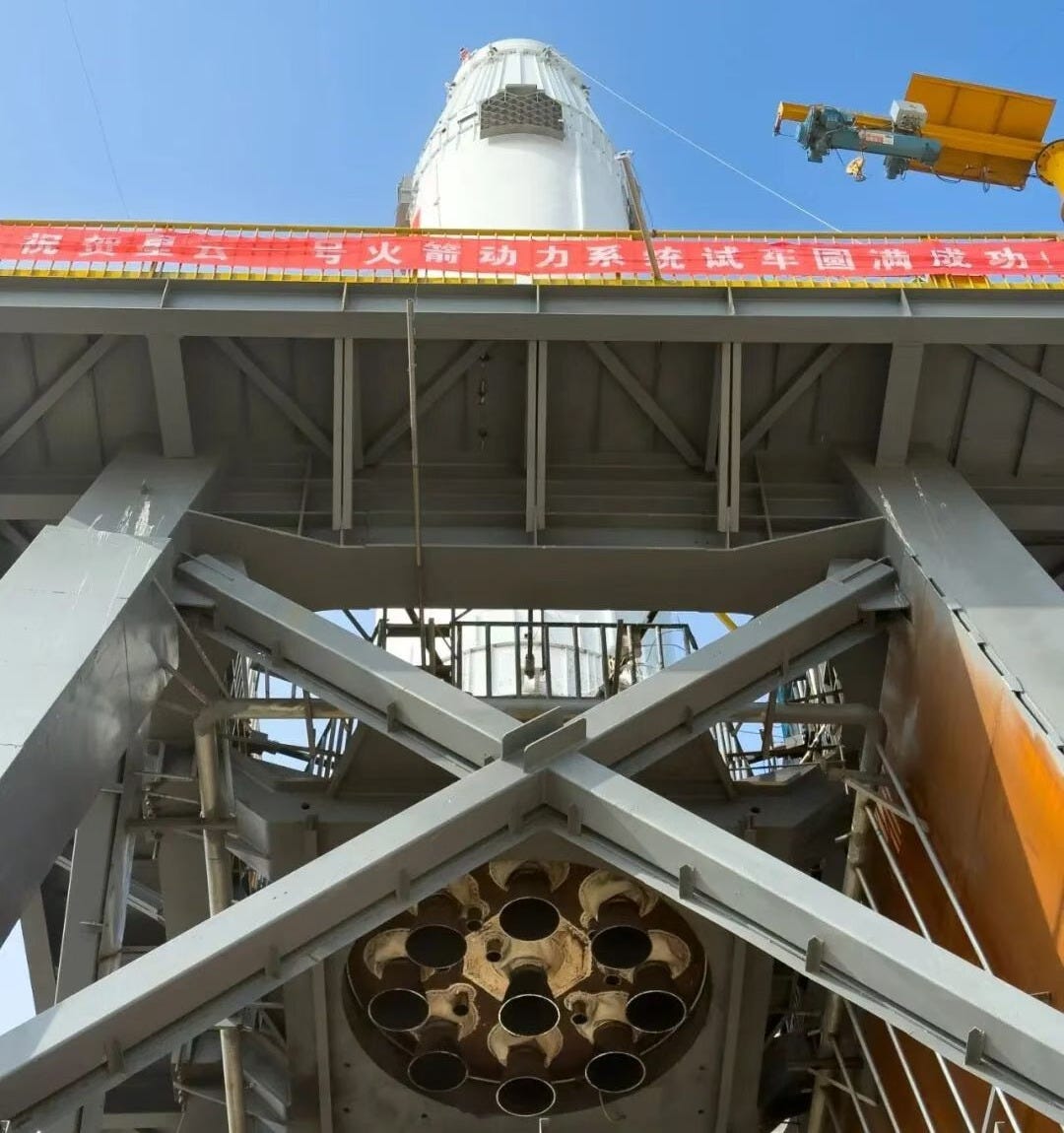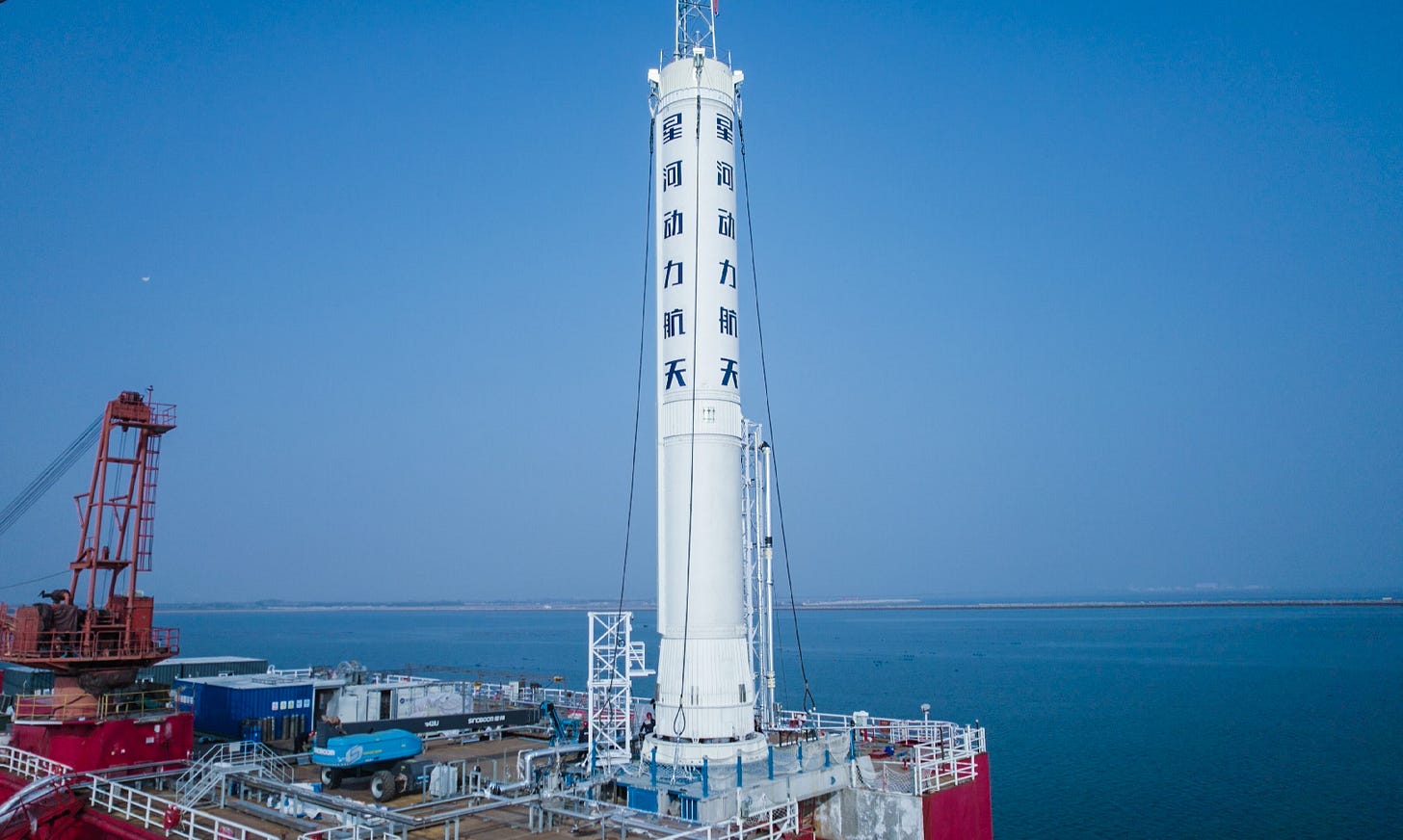Two Reusable Rockets Complete Static Fires Ahead of Debut Flights
Deep Blue Aerospace and Galactic Energy are nearing the end of development for their new launch vehicles.
Two reusable launch vehicles have completed their static fire tests within days of each other, and ahead of debut flights in the near future.
Deep Blue Aerospace shared on November 3rd that it had successfully fired up the first-stage of its Nebula-1 rocket, with its nine Thunder-R engines, a few days earlier on the 1st. For the test, the stage was loaded with rocket-grade kerosene and liquid oxygen to allow the engines to generate 22 tons of thrust each, for a total of 198 tons.
According to the company, the static fire demonstrated launch-like preparations, propellant loading, and engine ignition for a comprehensive verification of the stage and its systems. One verification highlighted was the simultaneous ignition of the nine engines, which was said to have proven the reliability of the Thunder-R engine series.
While not disclosing a launch date, Deep Blue did say that the first-stage used for the static fire will be used for the vehicle's debut flight, while testing reusable technologies (splashing down after launch). With current hardware readiness, a second-stage has been fired up with two hop tests, Nebula-1 may fly before the end of the year, but early 2026 is more likely. A coastal launch site (Wenchang or a floating platform) is also the more probable location for it, as the company has previously expressed interest in coastal launch sites.
Once assembled for flight, the two-stage partially reusable Nebula-1 will stand 30.2 meters tall with a first-stage diameter of 3.35 meters as well as a second-stage and fairing diameter of 2.25 meters to carry 2,000 kilograms into low Earth orbit. After a few flights in its current design, Nebula-1B will be introduced, which will stretch the first-stage, equip it with eleven Thunder-R engines, and widen the second-stage to 3.35 meters, allowing the rocket to carry at least an extra 1,000 kilograms.
A day after Deep Blue’s post, Galactic Energy announced on November 4th that Pallas-1’s first-stage conducted its static fire, lighting seven engines. The CQ-50 engines each generate 50 tons of thrust for a combined 350 tons, burning rocket-grade kerosene and liquid oxygen stored in the first-stage propellant tanks.
With the static fire, Galactic Energy says they have verified Pallas-1’s simultaneous ignition system, propellant loading and unloading from the tanks, coordination of control systems, and other support systems. It was added that during the test that the engines were gimbaled and throttled over various modes.
In their post about the static fire, Galactic Energy shared that Pallas-1 will debut from the Jiuquan Satellite Launch Center via a dedicated launch pad that is currently under construction. Back in August, progress was well underway on it and support facilities. A target launch date was not shared, but it was said the launch pad will be ready in the near future, indicating a very late launch this year or early into next.
Ahead of Pallas-1’s debut flight, a second-stage static fire was completed in September. Hardware for first-stage reusability has reportedly made good progress, according to the company.
When prepared for flight, Pallas-1 will be 42 meters tall with a diameter of 3.35 meters. It is planned that the rocket can carry 8,000 kilograms into low Earth orbit.
Pallas-1’s first-stage static fire was also the second hosted on a floating platform near Haiyang (海阳市), in Shandong (山东) province, after Space Pioneer’s to validate Tianlong-3. The local government has been pushing to develop a cluster for rocket assembly, development, and launch.





